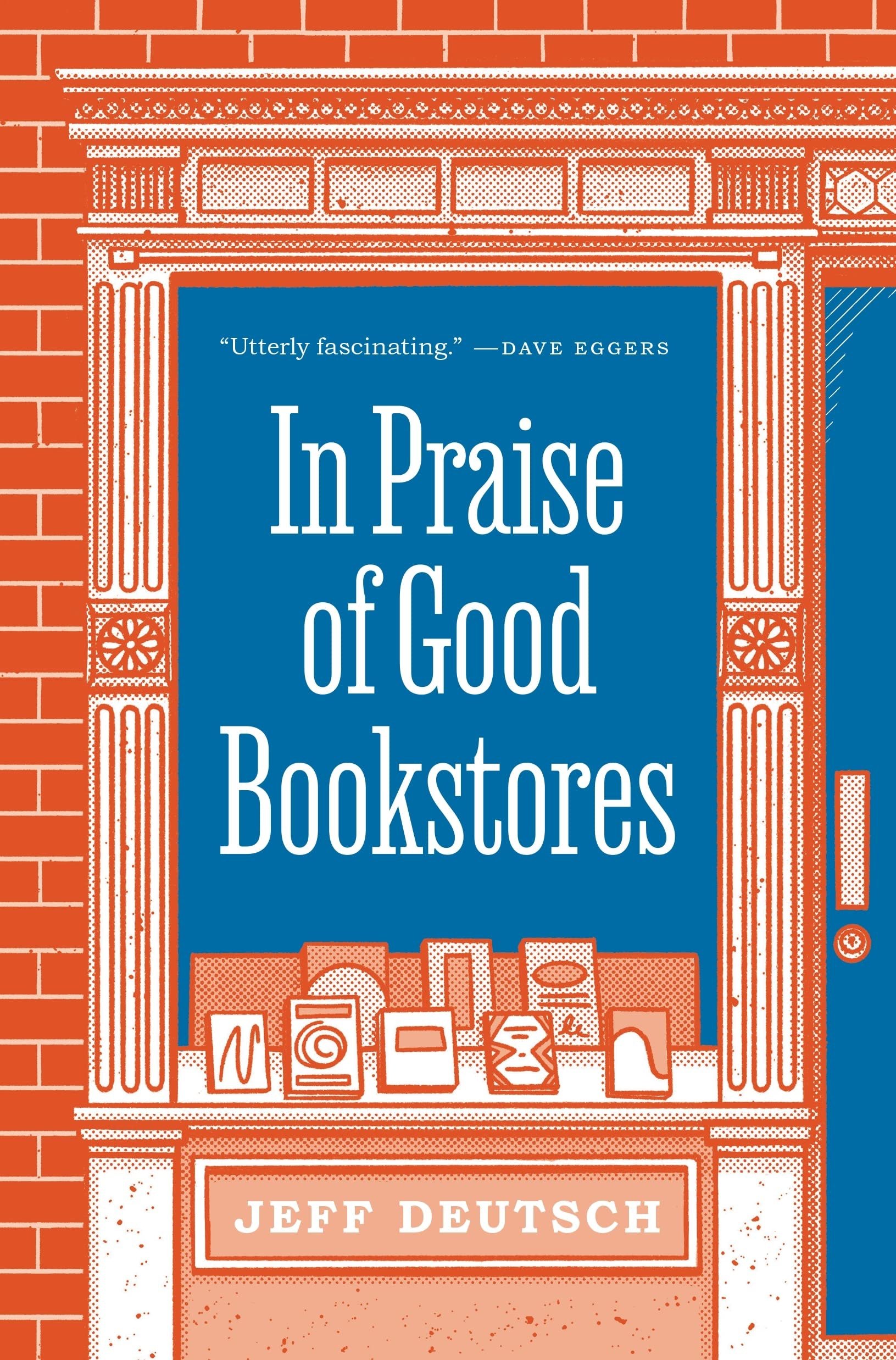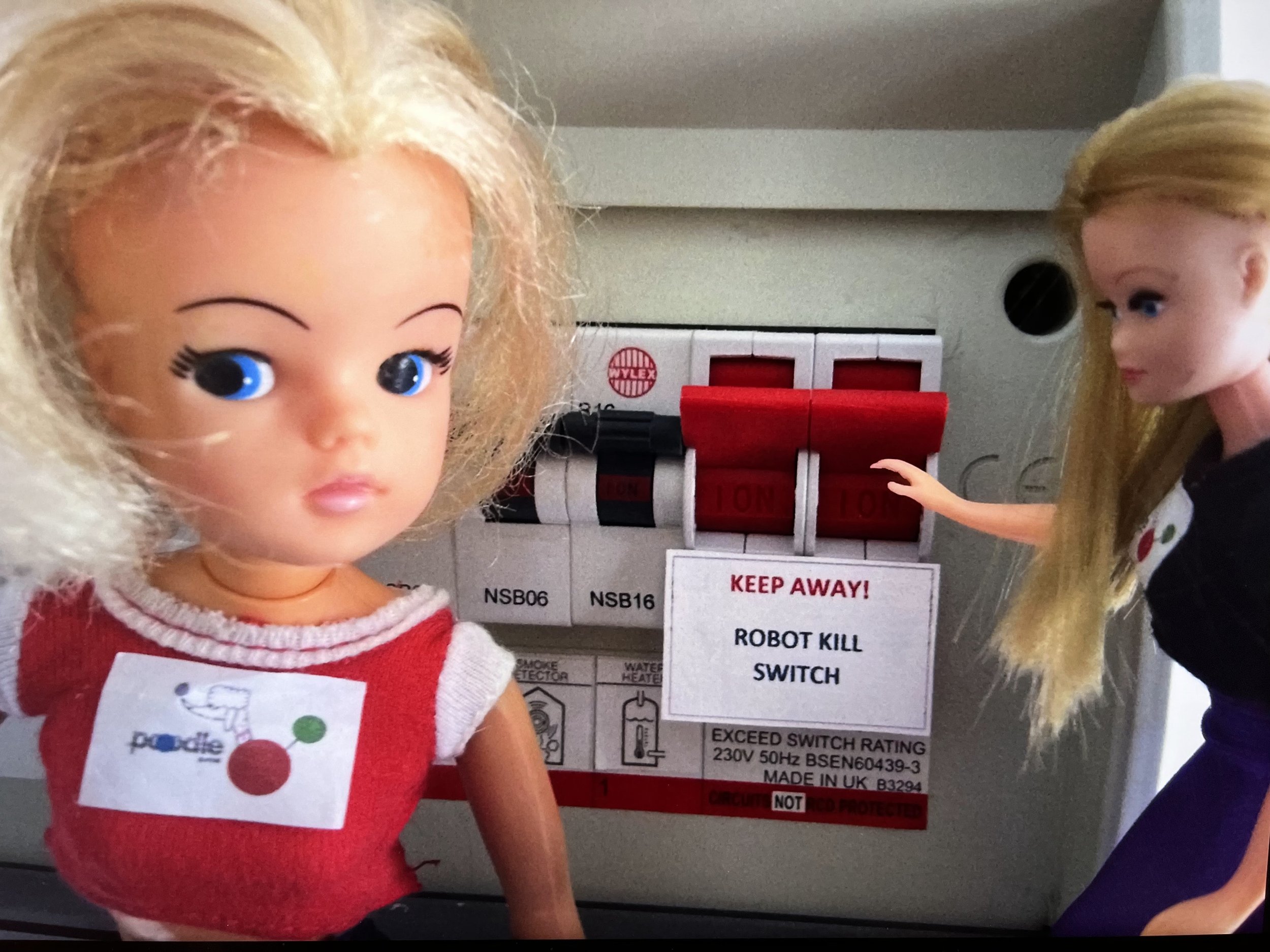On Books,
The author of this post loves books and reads at least one a week.
All of them in analog form which are marked and underlined using a very special instrument( Faber Castell pencil )and then the best lines are copied by hand using a decades old Mont Blanc pen onto parchment paper in leather bound notebooks to be re-read at a date in the future.
The reverence for books extends to their habitats such as bookstores (and the Chicago Seminary Bookstore on the University of Chicago campus is one of the finest bookstores in the United States if not the world) and libraries as sanctuaries.
Every line in this post about books, bookstores and libraries are a conflation of the lines I have copied over the years. Not one of them are my own. All I have done is combined them into new arrangements to reveal how sampling books alone can create something interesting on any topic which in this case is books, bookstores, and libraries. Everything italicized is literally someone else’s sentences or paragraphs and if this was a published book my editors would have me hunt down and attribute every quote. Please bear with me for not doing so in putting together this piece but do note that almost everything about bookstores is from “In Praise of Good Bookstores” by Jeff Deutsch who runs the Chicago Seminary Bookstore.
Books.
The book has proved one of the most useful, versatile, and enduring technologies in history. It’s portability, ease of reference and ability to concentrate a large amount of data made it indispensable. It is difficult to imagine how some of the greatest turning points in history would have been achieved without it.
Life without books would be a mistake.
One is twisted into a more complex shape when reading a great book.
Books give me “me”
The best books are like surgeons. They change you but you do not remember them, and they leave no external mark. Drugs get flushed from our system but not the best stories. One story can change you because it a sequence of language that produces a chemical reaction in the body.
Books are ways to escape ourselves. They are another form of dreaming. They are the magic of using black marks on a white page to conjure people and place out of nothingness. They are the closest we will be to becoming someone else or living someone else’s life.
When a story is told it is not forgotten. It becomes something else. A history of what we were. A hope of what we can become. They traverse across time and space like a phrase drifting down the centuries to reach someone in their Michigan classroom.
Stories are data with a soul.
We undervalue books. Many people who would think nothing of spending $17 on a couple of lattes and some baked goods, bristle at spending the same amount for a copy of a book that might provide untold hours of reflection and unquantifiable fulfillment.
A book is a gift. A commodity has value, and a gift does not. A gift has worth. Value is the comparison of one thing with another. Worth is something that we prize but we cannot put a price on.
The most important things in the world seem to be impossible to measure whether it be meaning, knowledge, curiosity, beauty, kindness, justice, wisdom, and love. And books.
If it is wisdom alone that makes the price of books (and wisdom is an infinite treasure for humans,) then the the value of books is unspeakable…
Bookstores.
The good bookstore sells books, but the primary product, is the browsing experience.
One of the great benefits of browsing is the rumination it evokes.
Browsing is a form of idleness that energizes just like there are forms of productivity that are wasteful.
Every good bookstore allows the reader to get lost in it.
A great bookstore is a total environment, where nothing except books seem to exist fully, where everything else is either not important or already in the books.
Great bookstores curate, convene and focus on community to separate themselves from their digital counterparts.
They understand that the book with which one was familiar was not, in most cases, the book one needed. It was the unknown neighbor on the same shelf that contained the vital image.
Books have destinies as objects and people appointments with them. And bookstores bring them together.
How many books must ripen on the shelf before we are ready for them?
Bookstores are scarce because we undervalue them, and good bookstores are scarce because we undervalue our cultural wealth.
Libraries.
The library as institution is ancient. Dating back thousands of years though Egyptian, Greek, Persian and Roman history, the first libraries were primarily archives for storing information. Whereas the classical library was exclusive and catered to the privileged classes, the modern library is inclusive and accommodate all. Hence it is said the library of the future will break down the barriers further. This is an interesting task for the architect to design a building that defines conventions and looks to the future.
The rules of libraries:
Books are for use.
Every reader his or her book.
Every book its reader.
Save the time of the reader.
The library is a growing organism.
A great bookstore or personal library has cherished the thing of the mind; it has insisted on including all points of view, but it has been selective.
Every day from the library a book is borrowed and whether in the reading room, the bus home or in a coffee shop a discovery will be made with something in the book and each reader will find such epiphanies, such enrichments of mind and changes of heart can be the stuff of every day…
In the ideal world every person would possess their own library. The walls of each home would only seem to be made of books; wherever one would look one would only see spines: because every real book is a mind, an imagination, a consciousness. Together they compose a civilization or even several. And a library is an archive of personal history where returning to a book after years and looking at the lines you underlined you discover how you may have both remained the same and changed over the years.
The book does not change but you do and they help you mark the passing of time and the changing of you.
The “thingyness” of books.
Books have a “thingyness” to them. One you can feel, hold and smell.
There is much to be gained by eBooks: ease, convenience, portability. But something is lost: tradition, a sensual experience, the comfort of thingy-ness — a little bit of humanity.
We shall not understand what a book is and why it has value if we forget how important to it is its body, the building that has been built to to hold its lines of language safely together through many adventures and a long time. Words on a screen have a visual quality to be sure but they have no materiality, they are only shadows and when the light shifts they will be gone. Off the screen they do not exist as words. They do not wait to be reseen, reread, they only wait to be remade, relit. One cannot carry them beneath a tree or into a side porch. One cannot argue with them in their margins; One cannot enjoy the memory of their dismay, when perhaps after years, they return to a treasured copy of a book to find the jam they inadvertently smeared there…
Another “thingyness” of books is how you feel after you spend an hour with a good book compared to the conveyer belt of distractions that we scroll through on our digital devices which have been algorithmically optimized to maximize someone else’s objective.
One often leaves you empty or enraged while the other leaves you uplifted and enhanced.
Upgrade your mental and emotional operating system.
Read.
A book.
On Leadership.
Art by Ai Weiwei
Four decades of experiencing, observing and reading about leadership has revealed these six skills/behaviors displayed by world class leaders:
Embrace Reality: Leaders acknowledge, face and communicate reality.
Engender Followership: Understand that people follow people and not titles since titles are bestowed while leadership is earned.
Strive for Excellence: The best leaders have a passion for excellence.
Build People: They are builders of people as much as they are of business.
Growth mindset: World class leaders are committed to constantly upgrading their and their companies’ skills, craft and knowledge.
Inspirational Storytellers: They go beyond math to meaning. They integrate spreadsheet and story.
Art by Ai Weiwei
The best leaders acknowledge and encourage the surfacing of facts regardless of how challenging.
A key to leadership is to solve challenges and address problems.
This requires confronting issues versus looking away or hoping some form of magical thinking will make them go away.
One cannot hope to get people to follow if they suspect one is not addressing real issues and challenges however difficult they may be.
Leaders embrace data and know math matters.
They accept that facts are stubborn things.
And while it may be forestalled for a while truth has a habit of breaking in.
Facing hard facts and addressing reality does not mean defeat or pessimism. But it is the first step in making things better.
To have a solution one must understand the problem.
This often requires creating an environment where people feel free to call out the problem and note that the brown moist thing that everybody is staring at around the conference table or on the Zoom screen is not a brownie but a turd.
Great leaders acknowledge mistakes. They know they do not have all the answers. This means they are open to criticism and correction, and they surround themselves with skill sets that offset and balance their areas of weakness.
Art by Ai Weiwei
Leaders engender followership.
Without the hearts and minds of those they manage one is not a leader but a ruler.
Rulers leverage fear, project power and exploit insecurity.
Employees genuflect, fall in line, salute and pander to the feared boss, while they silently seethe, create an array of plans to resist by slow walking decisions, plot insurrection or practice defection.
People follow people and not titles.
By being approachable, reasonable and empathetic a leader engenders followership.
And most importantly they do so through integrity.
They earn this trust by not only be fact driven but being clear and intentional about their goals and transparent about how they expect to get there.
Leaders say…
Here is where we are going.
Here is why we are going there.
And here is how we are going to get there.
If you have better ideas or concerns say so.
Art by Ai Weiwei
The best leaders build people and not just businesses.
Every good leader has many other leaders that work for them, have worked for them or want to work for them.
Leadership is not a zero sum gain of one person winning and another losing but a game of abundance where everybody learns, grows and challenge each other by continuously reaching higher and delegating more and more to others so they can take on new challenges and opportunities.
An art that builders of people have mastered is that of feedback. Specifically, how to provide input on how one can overcome challenges, correct mistakes and grow as people. The best do so in ways that combine truth and sensitivity that get people to believe in both their need to change combined with the belief that they can!
When looking for a leader ask them how many leaders they have built.
Art by Ai Weiwei
Leaders exemplify excellence.
They set high standards for quality of product and service delivered, financial results and what they expect of people around them
Excellence is what attracts customers, talent and financial results.
And helps create world class cultures.
They sweat the details and expect others to do so and measure themselves against aspirational benchmarks.
Art by Ai Weiwei
Growth Mindset.
The best leaders never stop growing.
They are continuously learning and honing and upgrading their craft.
They do and do not just manage.
They seek not to blame but to understand, to learn versus believing they know it all.
They realize that only if they grow and the people around them grow in skills, reputation and knowledge will the company and its customers and clients grow.
They invest in learning, taking bets on the future, challenging existing business models, looking outside their categories for inspiration and potential disruption.
Art by Ai Weiwei
Inspirational Storytellers.
In today’s highly networked environment where much is expected by companies from multiple stakeholders the ability to communicate with clarity, nuance, understanding and authenticity has become even more critical.
The math, data and the spreadsheet are key tools every leader leverages.
But they know that people choose with their hearts but then use numbers to justify what they have done.
Leaders find ways to resonate and inspire through their writing, their videos, their in-person group and individual communications by infusing the facts of math and spreadsheet with the feelings of meaning and story.
Leadership is accessible to everybody.
Most of the traits of a leader can be honed without being a “boss”.
One does not need to have people reporting to them or reaching a certain level of seniority or seasoning to a) work at honing one’s craft in the light of excellence, b) helping other people, c) spending time learning everyday d) building one’s writing and presentation skills and e) always being clear about one’s intentions and goals and transparent about the plan to get there.
Guiding Lines.
It is the time of the year where students graduate from high school and university.
Convocation speakers inspire and illuminate.
Life lessons are shared and imparted.
Here are some lines that have served as guides over the years.
1. Success is being able to spend your time in the way that creates joy.
Success is sought by all but what is being sought?
For some it is making a mark in their field or leaving some enduring work. For others it is seeking financial wealth or creating and nurturing a family. For some it is helping others.
For most people success also means a measure of happiness.
In the end if time is all that one has than success probably has to do with how one uses time.
Ann Dillard wrote that “the way we spend our time is the way we spend our lives”
When one is financially constrained one’s mind and time are colonized by making ends meet.
When one is physically in pain or suffering from ill health it is often hard to be happy.
So, if happiness is the ability to not spend time thinking all the time about ones financial or physical situation it means a certain amount of financial and physical well-being is key to being happy and possibly successful.
Sooner or later once these basics of not having to worry about the next rent check or waking up the next day are overcome the words and emotions that link the happy and successful are those of purpose, meaning, connection, flow, recognition and growth.
And these can change over time and are different for different people.
But it all comes down to having the freedom to allocate one’s time the way one does.
How do you want to spend your time, and can you increasingly get to a place where you spend more of it in ways that give you joy?
2. “Do not price yourself out of your dreams.”
It has been written that it Is “never too late to become what you are” but for many people by following the wrong star home they lose their way or spend most of their lives not being who they are.
The ability to control one’s time is inversely related to how much time one must do things to pay the bills.
Lower expenses lead to more options.
Increasing one’s options by limiting one’s possessions and way of living tends to lead to more success than maximizing one’s possessions which forces one to do work that one does not particularly enjoy or work with people that one does not resonate with in order to make ends meet.
Doing things that you resonate with and gets one into a flow is not only great for being happy today, but it is often a key to becoming an expert, a master and a leader in what one does.
To thrive you flourish by spending time at what you are good at and has you in a state of flow.
3. “Do not live in other people’s minds”.
It has been written that “comparison is the thief of joy” but so is living one’s life to score points in somebody’s else’s scoreboard of what success is.
The rise in mental anguish among teenagers is in part how social media has accentuated the need to look good in somebody else’s eyes.
But it is not just teenagers who live in other people’s minds versus theirs.
Caring what other people think is human and often learning and getting feedback on how one can improve is key to success so not living in other people’s minds does not mean listening to or caring what other people say or think.
It means stopping using their metrics and their rulers of success to rule the way you live one’s life.
It is like giving somebody else a remote control to the direction of your life.
4. “There is nothing good or bad but thinking makes it so”
While one may not agree with Hamlets’ statement that “there is nothing good or bad but thinking makes it so”, our mindsets matter a lot in how we perceive life, how we are perceived and the degree of success we may have in our varied endeavors.
In rapidly changing and chaotic times an agile mindset can be critical to success. While there are many personal trainers to help sculpt our bodies into somewhat supple forms, there is a scarcity in those who can show us how to exercise our minds to be as flexible as they need to be.
Mindsets matter.
Growth mindsets. Learning mindsets. Optimistic mindsets. Realistic mindsets.
Optimism matters.
In the novel “Gravity’s Rainbow” by Thomas Pynchon a character is described as one whose “mood collapsed the room”.
While misery may love company, nobody likes being in the company of miserable people. Optimism is not just an essential component of innovators but a trait that you must have if you wish to inspire folks to follow you. “Woe is me, doomed are us” works for a few drinks in a bar, but at the workplace it saps energy, hurts culture and is just a plain downer. Pessimism is something we all wallow in, but it fails to show the way out.
A way to get optimistic is to forget all the legacy nonsense you may have to grapple with and ask that if you had a fresh sheet of paper, a subset of the talent in your firm and its assets (brands, network, money), what would you do? You likely will find you are looking forward to what you and your company can do. Every day is a new career beginning. Tomorrow is where we will spend the rest of our lives.
5. “Practice Compound Improvement”.
The single most powerful concept in finance is that of compounding.
Compounding interest and compounding returns can over time create wealth or lead one to bankruptcy depending on whether you owe or own capital.
In a world of change we all may want to consider another way compounding can help us grow in changing times and drive mental, emotional, and even financial wealth which is compounding improvement.
There is so much we cannot control in a world driven by global, demographic, social and technological change but instead of being buffeted about helplessly in a sea of chaos maybe we can try to control and build our ourselves to be better.
Three learnings about compound improvement.
a) Discipline equals Freedom: This is the title of a book by Jocko Willink, a Navy Seal. Basically, if we want to get a grip on the world get a grip on ourselves. Things are more up to us than we think if we are willing to work at it.
b) Never graduate from school: The world is changing so fast that many of our skills and expertise and mindsets need continuous upgrading. While many of us set aside time to exercise to maintain our physical operating system we need to also feed and exercise our minds. The power of this habit is that at the end of a year one will have spent 365 hours learning new things by just doing one hour a day. The day we start dying is the day we stop learning.
c) Deliberate Practice: Anders Ericcson wrote a book called “Peak” which is the best study of deliberate practice. Deliberate practice involves three components
1) immediate feedback, 2) clear goals and 3) a focus on technique. According to his research, the lack of deliberate practice explained why so many people reach only basic proficiency at something, whether it be a sport, pastime, or profession, without ever attaining elite status.
The future is uncertain and the role of chance and the help that others give us should never be underestimated in how our days will be.
While the difficulty in life may be the choice it is the choices on how we choose to spend our time, measure ourselves, react to situations and grow that will define our days.
Photography by Rishad Tobaccowala.
Six Keys to Change.
Graphic by interdisciplinary contemporary artist Martha Haversham
Change sucks.
It requires one to step into the unknown.
To twist and turn into a new transformed self, team or firm. To leave the safety of the known path. Lift anchor and sail into a foggy horizon with no guarantee of safe harbor.
Difficult as it is…
Irrelevance is worse.
Individuals, teams and companies that wish to transform must endure change.
Successful change requires six steps:
Strategy.
Acquisition of new skills/M&A.
New organizational design.
Buy-in.
Aligned incentives
Education and training.
Graphic by interdisciplinary contemporary artist Martha Haversham
1. Strategy.
Strategy is “future competitive advantage”.
Specifically, what will people (customers, consumers etc.) want and need in the future?
People’s expectations constantly change and grow and optimizing for today’s needs assumes a steady state when demographic, technological and other changes are re-wiring needs.
What will a competitive set look like in the future?
The biggest opportunities and threats to any company often comes from outside it’s category. The greatest wealth creation and change drivers to the auto industry did not come from VW, GM, Toyota, BMW, Ford, Honda or Mercedes but from outside specifically Tesla which focused on software and electric and Uber who focused on replacing the car.
What advantage will you provide against those future needs and future competitive sets?
Gillette and Schick which thrived by charging increasingly higher prices for constantly improving quality razors sold through retail and advertised on tv and magazines had no advantage versus a Dollar-Shave-Club who sold good quality, low-priced razors through the mail using You-Tube and social media for awareness and sampling.
In addition, many young men were no longer fixated on being clean shaven a trend that the company refused to believe for a while.
Gillette was forced to take an 8 billion dollar write down.
Not moving to tomorrow when you should in order to protect today is always very costly.
Graphic by interdisciplinary contemporary artist Martha Haversham
2. Acquisition of new skills/ M&A.
To meet new needs of people and fend off a different competitive set, companies need to acquire people, channels or technologies from outside.
Too many companies waste huge amounts of money and time trying to cover their nakedness of next generation skills by hauling out some in-house assemblage on which they slap some weird name and then roll out accompanied by a bombastic press release.
Buyers are increasingly sophisticated and servicing existing customers with people who are still learning with their training wheels showing does not engender confidence or signal commitment.
Do it right. Get top notch people and buy firms that bring credibility and skills even if it involves re-allocating capital and resources from today. Funding yesterday at the cost of tomorrow is like starving one’s children so one can fund flowers for an ancestor’s grave.
3. New organizational design.
The future does not fit in the containers of the past.
Most organizations are designed for yesterday or today and not tomorrow.
If strategy changes and new people and companies are hired the biggest mistake that many make is tucking in tomorrow under today or yesterday.
Which defeats the purpose of the acquisition and dilutes all the strategic thinking.
New strategy requires new approaches on how a company is organized.
Principles that drive re-organization should be focused on maximizing customer benefit, ensuring friction-free collaboration that minimize duplication and aligning decision making with the right incentives.
Graphic by interdisciplinary contemporary artist Martha Haversham
4. Buy-in.
Too many firms after the first three steps of strategy, M&A and Re-organization believe their work is done and bring out the balloons and the posters and press releases.
Michael Tyson said, “Everyone has a plan till they get punched in the face”.
Boards and leadership of firms come quickly to the realization that everything is easy until people get in the way.
Telling people that change is good, threatening them with job loss if they do not change or creating communication materials and slogans to goad them into a cult like devotion to the new dear leader or the way forward rarely works in the short run and will likely fail after the threat of flagellation fades.
Because if there is nothing in it for them, people will out-wit, out-wait, out-pretend, and out-maneuver “management”. Until then they will fill the time genuflecting and bowing and going through the monitored motions of attending the right meetings, muttering the motivational mantras and stating the slogans required.
If one wants an organization or team to grow and change, we will need to deliver answers to three questions:
Why are the recommended changes good for them?
How can it help them grow?
How do these changes impact their compensation?
Graphic by interdisciplinary contemporary artist Martha Haversham
5. Aligned Incentives.
Steven Levitt of the University of Chicago in his book “Freakonomics” stated that if you want to know if a company’s strategy will work ask to see their incentive programs.
Over a decade ago magazine and newspaper publishers saw the emerging threat from digital technology and wrote grand strategy documents but few made it to the other side. Not because they were not smart but because they continued to incentivize the selling of pages and the old ways of doing the business. Power, promotions and pounds/dollars were paid to those who controlled today’s client relationships and today’s budgets.
If the fish rots from the top, then change only happens when seismic shifts in compensation and power happen at the top.
Everyone watches this because people will do what they are rewarded to do and not what some change agent or “Vision 20XX” encourages them to do.
It is hard enough to change and totally stupid to go through the pain of change when one gets rewarded to stay the same!
Graphic by interdisciplinary contemporary artist Martha Haversham
6. Education and training.
T.S. Eliot wrote “between the idea and the reality falls the shadow”.
In companies this shadow between where they are and where they want to be is known as lack of skills or know-how.
If you want people to behave differently, think differently, work differently in addition to communicating why it is good for them and incentivizing them to do so, companies must also provide ways for them to learn and grow the new skills and capabilities that will be needed.
Whether it be rotating into new groups, secondments or other strategies they must all be accompanied by some combination of self-serve, guided and enabled training.
The single biggest ROI in most companies in time will be the ability to upgrade the mental and emotional operating skills of their talent.
Upgrading skills is more cost effective, humane and culturally positive than laying off people and bringing in new teams and will be increasingly key as we enter the Third Connected Age of Blockchain, AI, AR/VR, and 5G.
It is imperative that companies have a significant commitment to learning and development agendas with senior management committed to it and members of the talent leadership being included in the highest echelons of power.
No company can grow unless its people grow.
And the day one stops learning one stops growing.
Looking Back. Looking Ahead.
Spliced imagery by Won Seoung Won
This past week in an interview by Kenneth Hein, the U.S. Editor of “The Drum” was asked to look back at what the keys to a successful career might be and then look ahead to what may come.
It was a short interview, but feedback indicates it resonated.
Have edited it down to the parts others may find useful while adding some summary points. Th entire piece can be found here.
Spliced imagery by Won Seoung Won
Looking back. Advice to the next generation on careers.
The first piece of advice is that successful careers are built on a combination of luck, mentorship and aligning with the right trend.
And yes, hard work is important, but everybody works hard.
For mentorship the key is to find the best bosses or best people you can find to guide you.
In the case of aligning with the trend, try to understand something that will grow over the next 10-15 years.
And about luck, the way to maximize luck is say yes to as many opportunities as you can, even if they seem a stretch.
The second piece of advice is to never stop learning.
The day you stop being a student is the beginning of the end of your career.
It doesn’t matter how senior you are or how powerful you are. The world is changing so much that even at this stage I spend an hour-and-a-half a day learning. Invest in continuous learning and education, because otherwise you will find yourself growing increasingly irrelevant.
The third piece of advice is that eventually when you become truly successful, your success will be built on a very benign form of a Ponzi scheme.
You will be successful because the people around you are successful. And you will basically be given some sort of credit for the people around you. Therefore, make sure that you really, really invest in the people around you because that is investing in yourself in everything, from training to relationships to looking after them and helping them along with their careers. You can’t succeed, especially as you get more responsibility, unless you do that.The last thing is never taken yourself too seriously.
Be humble.
Laugh at yourself and when people say you’re full of shit, you probably are.
Spliced imagery by Won Seoung Won
Looking ahead. The state of things to come.
An intense optimism about where we are relative to the state of two things.
The state of technology is one. Broadly, we’re at the cusp of one of the most radical and positive changes in technology. And it isn’t necessarily just digital technology – it’s everything from biotechnology to all the rest.
The second one is that I believe that all of us are good people, more than the newspapers claim we are. Especially if you look at the younger generations. They have the right set of values. Take those combined with the next generation of technologies and I believe we’re going to have a step change.
Two broad predictions.
One is that the next 10 years will be good for people all over the world. Not for every single person, but the world will be better off in the next 10 years than it is today because of a combination of artificial intelligence, biotechnology and the next generation of the internet – which is everything from blockchain to AR to VR to 5G.
Second is that we will look back at the way we used to be working in 2019 and in 2029 wonder how anybody worked that way. We’re about to see the most radical rethinking of work, workers and workspaces ever. And this is going to unleash more options for more people and enable many powerful ways to combine the benefits of in-person interaction and the flexibility and cost benefits of distributed work.
In sum, 1) find mentors, 2) raise your hand/take risks, 3) align with trends, 4) keep learning, 5) invest in people, 6) remember to not take oneself too seriously and 7) have a positive/optimistic attitude.
These fundamentals tend to work in every industry, every country and across all levels.
For a deeper look at career management check out Career Tools!
For more on what lies ahead see 10 predictions for the next decade.
































